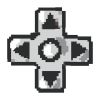Competition timeline
Entries accepted
Aug. 13, 2024 – Jan. 31, 2025
Entry deadline
Jan. 31, 2025, at 5 p.m. EST
Winners announced
April 2, 2025 (tentative)
1. Register for the competition
You can participate in the competition as an individual or as a team of up to five members. If you are under 13 years old, you are not allowed to register for this competition or provide any personal information on this form. Your parent or guardian must register on your behalf and manage your account. Please ask that person for assistance to complete this registration and participate in the NSF Game Maker Awards.
If you're submitting as a team:
Select your team lead, who will be responsible for registering for the NSF Game Maker Awards and submitting your team's video game entry. After your team lead registers, they can invite everyone else on the team within the submission platform.
If you're submitting as an individual:
Register in the submission platform, listing yourself as the team lead.
When you register for the NSF Game Maker Awards you will need to provide the following information:
- Your team's name.
- Your team lead's first name and the first initial of their last name.
- Your team lead's age.
- Your contact email (if you are under 13 years of age, parents/guardians must submit their email and register on your behalf).
- Your student group category (elementary, middle or high school). Your team's student group category will be determined by the age of the oldest team member.
- Your zip code.
2. Design and develop your video game
Video game requirements:
- If you submit the optional game demo, the digital game must
be playable on a web browser and accessible
via a URL. - If you submit a game in Minecraft or Roblox, you will not be
able to submit a playable demo, so ensure that you upload a
comprehensive video presentation (in MP4 format). - Games must be created using a free or open platform like Scratch, Unity, Construct, RPG Maker, etc.
- Games and character designs should be inspired by the competition theme "Life in 2100."
- Games should also connect with one or more of NSF's focus areas.
- Entries submitted for the competition must be original work.
- Entries submitted for the competition must be appropriate for all ages. Entries must not include human-on-human or human-on-animal violence; offensive, discriminatory and/or hateful content; overtly political content; or sexual themes. Games that include any of these elements will be disqualified.
3. Prepare your entry for the competition
Follow these guidelines to develop and submit your video game.
Required components for your video game entry
1. A logo or image that represents your video game.
Your entry to the competition must include:
- The name of your video game
- A logo or image that visually represents your video game.
- A caption for your logo or image.
- A credit for your logo or image. A credit is the name of the creator of the logo or image.
- Your logo or image must be formatted as a JPG or PNG file.
2. A video presentation that demonstrates your video game.
Your entry should include a short video presentation that showcases your game and the overall game play experience and explains the STEM concepts and/or intended educational impact. It should include a walk-through of the game, highlighting key features and STEM content. Visuals should be clear and relevant to the content discussed.
The video presentation should be:
- 90–99 seconds long.
- In MP4, AVI or MOV format.
3. Written explanation of the game.
Entries should include an explanation of the game's design, the NSF focus areas the game incorporates, and the vision behind the game.
The explanation must clearly outline the educational goals of the game, and describe how these goals are achieved through gameplay. It should discuss any research or insights that informed the game design. The explanation also needs to describe how the game’s purpose and design connects with one or more of NSF’s focus areas, providing examples of this alignment providing examples of this alignment.
- Length: 500–1,000 words.
4. Written explanation of lessons learned.
An explanation of the lessons learned while developing the game and why you chose to develop the game.
- Length: 500–1,000 words
5. Parental/guardian permission form.
Required for those under the age of 18, a document with parental/guardian permission language and a completed signature section. This form can be found in the submission portal.
All team members under the age of 18 will be required to submit a parental/guardian permission form when submitting your entry.
Optional components
6. Playable game demo.
A functional demo of the game that judges and reviewers can play to evaluate its effectiveness and engagement level. The game must be playable on a web browser and accessible through a URL.
The demo should be a stable release that allows users to explore the core functionalities and educational aspects without major bugs or issues. It must be accessible enough that reviewers can begin playing without specialized software or extensive setup. It is preferable to include instructions or a guide on how to navigate the game and understand its features.
- Compatible with standard PC configurations.
- File type: Executable or web-based platform.
7. Storyboards and sketches.
Submit storyboards and sketches as image files. These visual aids should clearly depict the game's concept, design process and key elements.
- File type: JPG, PDF or PNG.
8. Mentor support write-up.
If applicable, describe your mentor and their name. Explain how the mentor supported you in the development and submission of the game or competition entry.
- Length: 500–1,000 words.
4. Submit game and competition entry
Visit nsfgamemakerawards.skild.com to submit. The deadline to submit is Jan. 31, 2025, at 5 p.m. EST.


